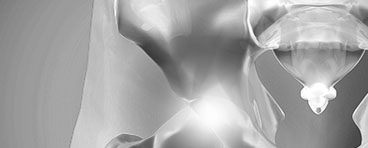Click on the links below to find out more
Hip Revision Replacement
RECOVERY & RISKS
As with any major surgery, there are potential risks involved. The decision to proceed with the surgery is made because the advantages of surgery outweigh the potential disadvantages.
RISKS
It is important that you are informed of these risks before the surgery takes place. Complications can be medical (general) or specific to the hip.
Medical Complications include those of the anaesthetic and your general well-being. Complications include:
- Allergic reactions to medications
- Blood loss requiring transfusion
- Heart attacks, strokes, kidney failure, pneumonia, bladder infections
Serious medical problems can lead to ongoing health concerns, prolonged hospitalisation, or rarely death
Specific complications of Hip Revision Include:
- Infection: Infection can occur with any operation. If it occurs, it can be treated with antibiotics, but may require further surgery. Very rarely, your hip may need to be removed to clear the infection.
- Blood clots (deep venous thrombosis): These can form in the calf muscles and travel to the lung (pulmonary embolism). These can occasionally be serious and even life-threatening. If you get calf pain or shortness of breath at any stage, you should notify Dr Slattery immediately.
- Dislocation: This occurs when the ball of the replacement slips out of the socket. This occurs more commonly after revision hip replacement than your first hip replacement. If it occurs it need to be put back into socket, and if it occurs multiple times it may require an operation.
- Fractures of the femur (thighbone) or pelvis (hip bone): This is also rare, but can occur during or after surgery. This may prolong your recovery or require further surgery.
- Damage to nerves or blood vessels: These are very rare but can lead to weakness and loss of sensation in part of the leg. Damage to blood vessels may require further surgery if bleeding is ongoing.
- Wound irritation: Your scar can be sensitive or have a surrounding area of numbness. This normally decreases over time and does not lead to any problems with your new joint.
- Leg length inequality: It is very difficult to make the leg exactly the same length as the other one. Occasionally, the leg is deliberately lengthened to make the hip stable during surgery. There are some occasions when it is simply not possible to match the leg lengths. All leg length inequalities can be treated by a simple shoe raise on the shorter side.
- Failure to relieve pain: this is very rare, but occasionally pain felt in the hip can be coming from the back.
- Limp

Dr David Slattery
FRACS MBBS (Hons) LLB FAOrthA
Dr David Slattery is an orthopaedic surgeon based in Melbourne with over 10 years of experience, with a special focus on hip and knee joint preservation and replacement. With qualifications in both medicine and law, he brings a unique and comprehensive approach to patient care. His surgical techniques are minimally invasive and evidence-based, designed to reduce pain and enhance recovery.
Trained in leading institutions across Europe and the USA, Dr Slattery offers advanced treatments for a wide range of joint conditions. He is deeply committed to patient outcomes and takes pride in tailoring treatment plans to each individual. Whether you’re an athlete or seeking relief from chronic joint pain, his goal is to restore function and improve your quality of life.







